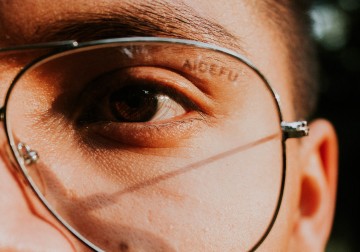In a new study from LVPEI, Dr. Vijaya K. Gothwal and others estimate the hospital-based prevalence of loneliness among a cohort of young adults with vision impairment and how it affects their quality of life.
Vision plays a crucial role in socialization. Gestures, facial expressions, and body language enhance social interactions enhance verbal exchange adding depth, nuance, and emotion to the conversation. People with vision impairment (VI) may have difficulty in recognizing these physical cues, which can negatively impact their ability to socialize. This could result in limited social networking, a diminished social circle, and ultimately, a feeling of loneliness and isolation. Loneliness can adversely impact mental health and can increase the risk of depression. Social circles and lifelong networks of friendship are typically made in one’s youth. Vision loss can impair a young person’s ability to build these social networks, thereby leaving them lonely.
Intense loneliness can be more debilitating in the long-term than even smoking or obesity. It is a public health concern that needs more research attention, especially as early interventions may offset some of its negative effects. Technology may offer solutions that may overcome the limitations of sight loss. Young people with VI who have access to the internet, for example, seem to be better placed to build online communities of support. However, data on loneliness among young adults with VI is scarce. A snapshot into the loneliness of young Indians with VI and its effects on their mental health will add to our understanding of this complex condition.
In a new study published in the journal Ophthalmic and Physiological Optics, Dr. Vijaya K. Gothwal and her colleagues from LVPEI, and the City University, London, estimate the prevalence of loneliness among young adults with VI visiting the institute, and how it affects their quality of life (QoL). The study included 422 young adults (18-35 years) referred to the Institute for Vision rehabilitation for low vision rehabilitation care. Among them, 203 (48%) had VI, the majority of whom (78%) had moderate-to-severe VI and were undergoing low vision rehabilitation care at LVPEI. These patients were compared to 219 age-matched controls without VI. The study was conducted using three questionnaires: a 20-question loneliness scale, two social network index (SNI) scales that assess participation in social relationships, and a modified World Health Organization Quality of Life (WHOQOL) questionnaire to evaluate health-related QoL.
Young adults with VI reported feeling lonelier than those without VI. One in ten (10%) participants with VI reported feeling moderate loneliness, while 4.4% felt severely lonely. In total, one in seven young adults with VI reported moderate-to-severe loneliness. Fewer friends, extended family members, and neighbors were the main causes of the participants feeling lonely. Participants without VI also had a bigger social circle because of participation in religious groups and volunteer services. Education had a significant impact on loneliness. Patients with 12-or-less years of education also had a much worse loneliness score, possibly due to a lack of high school and college friends. QoL of participants with VI was much lower (QoL score: 4 times worse) compared to the control group. The study highlights that young adults with VI, especially those who are less educated, need interventions that break down barriers to social participation.
‘The study found that the vast majority of young adults with VI do not report any loneliness, and this stands out when compared to the 52% prevalence among Norwegian young adults with VI,’ says Dr Vijaya Kumari Gothwal, Head - Patient-Reported Outcomes Unit and the corresponding author for this paper. ‘Education, ability to travel and other such factors hamper access to social networks for young adults with VI in India. All these barriers can be tackled to increase social activity for these groups.’
Citation
Gothwal, V. K., Kanchustambam, J., Kodavati, K., & Subramanian, A. (2024). Young adults with vision impairment in India: Loneliness and social networks. Ophthalmic & Physiological Optics, 44(5), 808–818. https://doi.org/10.1111/opo.13317
Photo credit: El ojo que mira mirando, by Luis Rodríguez, WSD photo competition.



